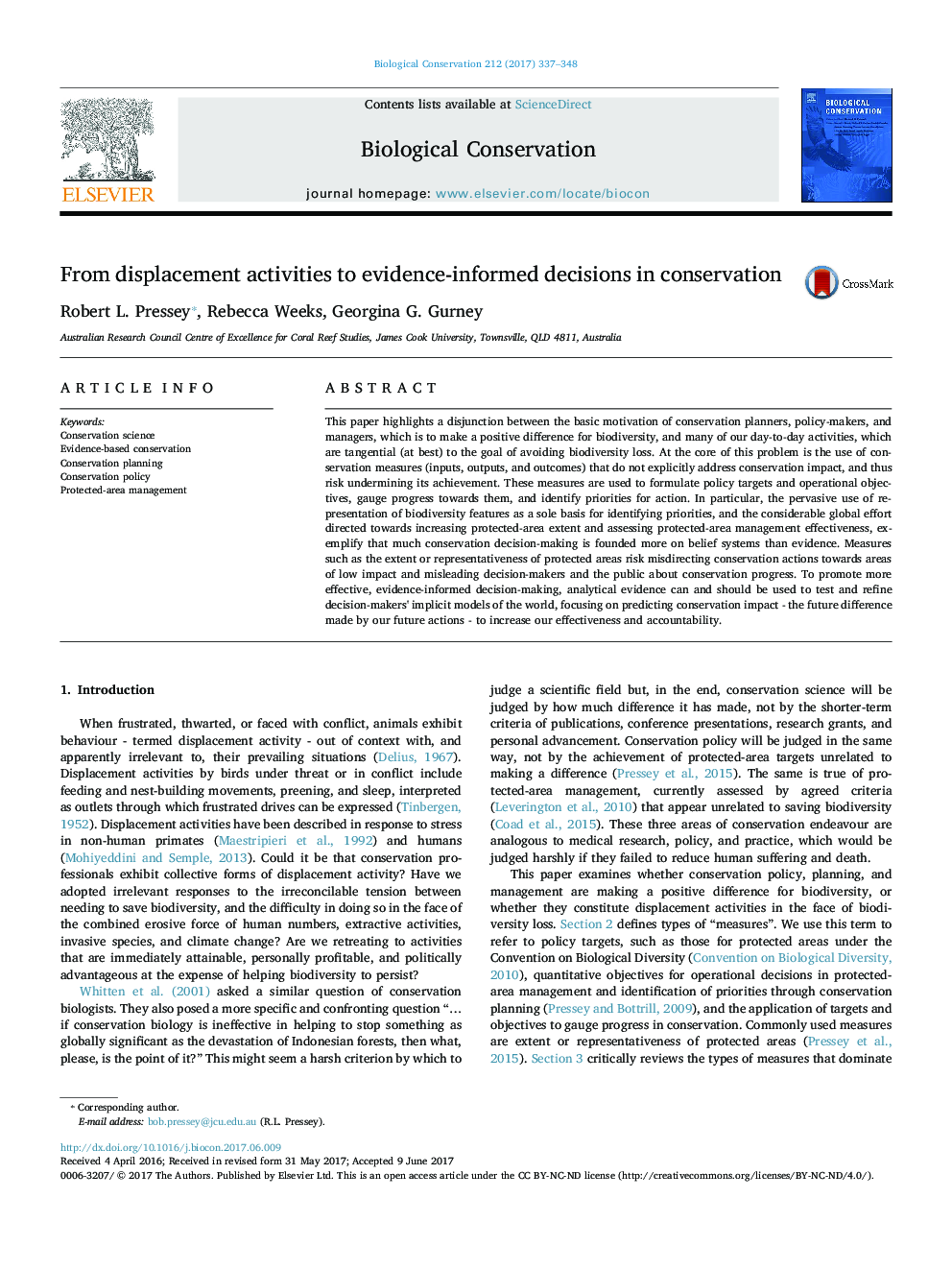| Article ID | Journal | Published Year | Pages | File Type |
|---|---|---|---|---|
| 5743116 | Biological Conservation | 2017 | 12 Pages |
Abstract
This paper highlights a disjunction between the basic motivation of conservation planners, policy-makers, and managers, which is to make a positive difference for biodiversity, and many of our day-to-day activities, which are tangential (at best) to the goal of avoiding biodiversity loss. At the core of this problem is the use of conservation measures (inputs, outputs, and outcomes) that do not explicitly address conservation impact, and thus risk undermining its achievement. These measures are used to formulate policy targets and operational objectives, gauge progress towards them, and identify priorities for action. In particular, the pervasive use of representation of biodiversity features as a sole basis for identifying priorities, and the considerable global effort directed towards increasing protected-area extent and assessing protected-area management effectiveness, exemplify that much conservation decision-making is founded more on belief systems than evidence. Measures such as the extent or representativeness of protected areas risk misdirecting conservation actions towards areas of low impact and misleading decision-makers and the public about conservation progress. To promote more effective, evidence-informed decision-making, analytical evidence can and should be used to test and refine decision-makers' implicit models of the world, focusing on predicting conservation impact - the future difference made by our future actions - to increase our effectiveness and accountability.
Related Topics
Life Sciences
Agricultural and Biological Sciences
Ecology, Evolution, Behavior and Systematics
Authors
Robert L. Pressey, Rebecca Weeks, Georgina G. Gurney,
